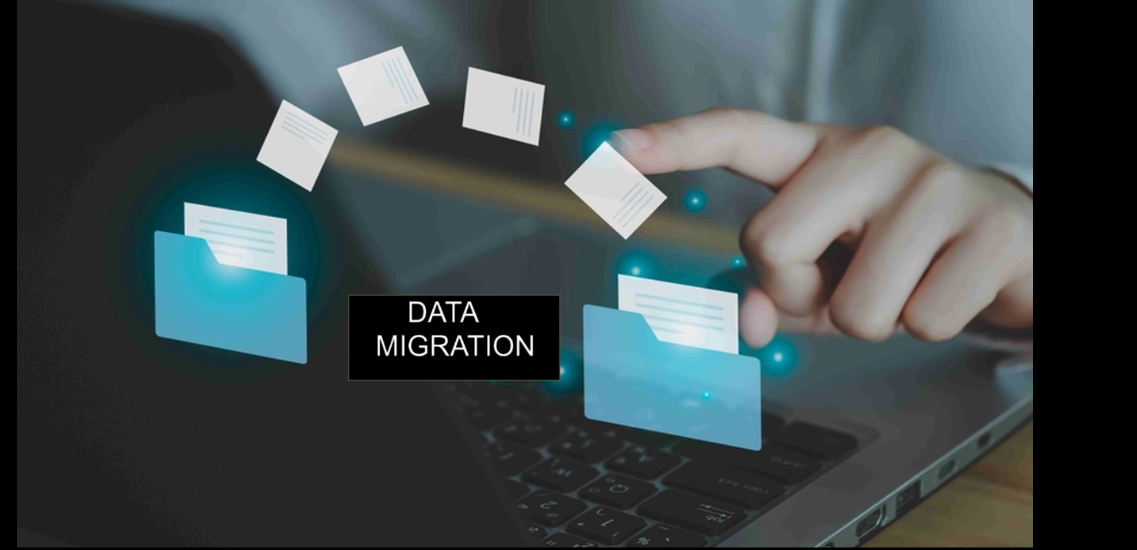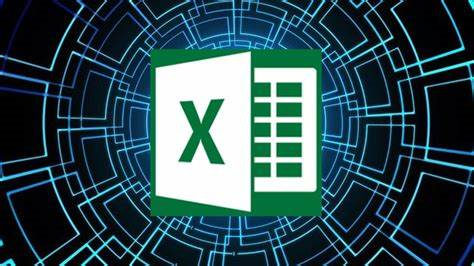Newest Courses

System Basics
ONF100 (System Basics) Course
Overview
This course provides a comprehensive understanding of key modules in an ERP system, covering core business functions such as Sales, Procurement, Accounting, Warehouse, and User Management. It introduces participants to the system interface, customization options, and critical workflows that enable smooth business operations.
Course Objectives
- Understand the ERP system architecture and navigation.
- Create and manage sales quotations and sales orders.
- Execute procurement and warehouse operations.
- Configure accounting and request management functionalities.
- Manage users and roles effectively.
- Customize system windows as per business requirements.
Course Content
- System Overview
- Sales Quotation
- Sales Order
- Warehouse Management
- Procurement and Warehouse
- Accounting
- Request Management
- Users and Roles
- Window Customization

Basic Setup
Basic Setup Course
OverviewThe Basic Setup Course is designed to provide foundational knowledge and hands-on training on the initial configurations required for successful ERP implementation. This course focuses on essential setups that act as the building blocks for all functional modules, ensuring a consistent and efficient working environment across the system. Participants will learn how to configure system-level and organizational parameters such as tenants, financial years, currencies, users, and roles.
Course Objectives
- Learn to set up the core structure of the ERP system.
- Configure currency, financial year, document types, and roles.
- Understand basic master setups for smooth system operations.
Course Content
- Tenant & Organization Setup
- Warehouse & Locator Setup
- Financial Year & Currency Setup
- Currency Rate Types & Conversion (Manual/Automatic/Cross Rate)
- Document Types & Sequences
- UOM & UOM Conversion
- Product Cost Element
- Accounting Book Setup
- User & Role Setup

Master Data Setup (SCM)
Master Data Setup Course (SCM)
Overview
This course covers the essential master data configurations required for smooth business operations across finance, sales, procurement, and inventory modules.
Course Objectives
- Understand and configure key master data elements
- Ensure consistency in financial, product, and partner data
- Set up tax, pricing, and commercial rules
Course Content
- Business Partner Group, Vendor/Customer Master, Employee Setup
- Payment Terms, Payment Methods, Withholding Tax & Category
- Price List, Discount Setup, Return Rule, Incoterm & Rule Setup
- Tax Class, Category, Region, Rate
- Serial No Control, Lot Master & Control, Product Master
- Attribute Master & Group, Brand Master, Product Category
- Charge Master, Business Partner Mandate
- RMA Type

Procurement Management
Procurement Management Course
Overview
The Procurement Management Course is designed to equip participants with a comprehensive understanding of the end-to-end procurement lifecycle within Onfinity system. This course covers various procurement scenarios, from requisition to payment, ensuring accurate and efficient handling of purchasing activities. Participants will gain hands-on experience in managing RFQs (Request for Quotations), POs (Purchase Orders), GRNs (Goods Receipt Notes), AP Invoices, and vendor returns, with a focus on document matching and compliance.
Course Objectives
- Understand the complete procurement flow from requisition to payment.
- Learn to manage RFQs, POs, GRNs, and AP Invoices effectively.
- Perform three-way matching to ensure procurement accuracy.
- Handle advanced scenarios like Blanket POs, Landed Costs, and Vendor Returns.
Course Content
- Request For Quotation (RFQ) to Purchase Order
- Requisition to Purchase Order
- Requisition to RFQ to Purchase Order
- Requisition to Blanket Purchase Order
- Blanket Purchase to Purchase Order
- Direct Purchase Order
- Direct Purchase Order with Expected Landed Cost
- Purchase Order with GRN Confirmation
- Advance Payment Purchase Order
- Vendor Return

Material Management
Material Management Course
Overview
The Material Management Course provides a detailed understanding of inventory operations and material flow within Onfinity system. This course covers essential transactions such as inventory count, material transfers, assembly/disassembly processes, and inventory use. Participants will learn how to manage inventory carts, track material movements, and perform adjustments with accuracy and control.
Course Objectives
- Learn to manage inventory using carts and scanning devices.
- Understand various material transfer scenarios with and without confirmation.
- Perform inventory counting and usage transactions.
- Execute assembly, disassembly, and reverse assembly operations.
Course Content
- Inventory Count Form
- Inventory Count
- Inventory Use
- Inventory Use against Requisition
- Material Transfer with Confirmation
- Material Transfer without Confirmation
- Material Transfer against Requisition
- Assembly
- Disassembly
- Reverse Assembly

Sales Management
Sales Management Course
Overview
The Sales Management Course is designed to provide participants with a comprehensive understanding of the end-to-end sales lifecycle within the Onfinity system. This course covers various sales scenarios, from quotation to invoicing, ensuring accurate and efficient handling of customer orders. Participants will gain hands-on experience in managing Sales Quotations, Sales Orders, Blanket Sales Orders, Delivery Orders, AR Invoices, and Customer RMAs, with a focus on document flow and operational accuracy.
Course Objectives
- Understand the complete sales flow from quotation to invoicing.
- Learn to manage Sales Quotations, Sales Orders, Blanket Sales Orders, and Delivery Orders effectively.
- Perform accurate document transitions to ensure fulfillment and billing.
- Handle advanced scenarios like Blanket Sales Orders, RMAs, and Drop Shipments.
Course Content
Sales Quotation to Sales Order (SO)
- Create a Sales Quotation.
- Convert the quotation into a Sales Order.
- Generate and confirm the Delivery Order to ensure complete item delivery.
- Create the AR Invoice using the "Create Lines From" button in the AR Invoice screen.
Sales Quotation to Blanket Sales Order (BSO)
- Create a Sales Quotation.
- Convert the quotation into a Blanket Sales Order.
- Release a Sales Order from the Blanket Sales Order.
- Generate and confirm the Delivery Order.
- Create the AR Invoice using the "Generate Invoice Process" button in the Delivery Order screen.
Blanket Sales Order to Sales Order
- Create a Blanket Sales Order.
- Release a Sales Order from the Blanket Sales Order.
- Generate the Delivery Order
- Create the AR Invoice using the "Generate Invoice (Manual)" option.
Sales Order
- Create a Sales Order.
- Generate the Delivery Order.
- Create the AR Invoice using the "Create Lines From" button.
Customer RMA (Return Merchandise Authorization)
- Create a Customer RMA against the Sales Order and Delivery Order.
- Generate the Customer Return document.
- Create the AR Credit Memo Invoice using the "Create Lines From" button.
Drop Shipment
- Create a Drop Shipment Sales Order.
- Generate corresponding Purchase Order from the Sales Order linked as drop shipment.
- Confirm the delivery order directly from the Goods Receipt Note.

Master Data Setup (FINANCE)
Master Data Setup Course (FINANCE)
Overview
This course covers the essential master data configurations required for smooth business operations across finance, sales, procurement, and inventory modules.
Course Objectives
- Understand and configure key master data elements
- Ensure consistency in financial, product, and partner data
- Set up tax, pricing, and commercial rules
Course Content
- Business Partner Group, Vendor/Customer Master, Employee Setup
- Payment Terms, Payment Methods, Withholding Tax & Category
- Price List, Discount Setup, Return Rule, Incoterm & Rule Setup
- Tax Class, Category, Region, Rate
- Serial No Control, Lot Master & Control, Product Master
- Attribute Master & Group, Brand Master, Product Category
- Charge Master, Business Partner Mandate
- RMA Type

Master Data Setup (HRM)
Master Data Setup Course (HRM)
Overview
This course provides comprehensive guidance on configuring essential master data that supports HR operations and financial transactions. You will learn how to set up employee groups, sales representatives, and key financial parameters such as payment terms, methods, pricing structures, and tax settings. These configurations serve as the backbone for accurate payroll processing, invoicing, and managing customer/vendor transactions.
Course Objectives
- Understand the role of master data in HR and finance workflows
- Learn to configure employee-related and financial master data
- Enable accurate transaction processing through proper setup
Course Content
- Employee Group
- Employee/Sales Representative Setup
- Payment Terms
- Payment Methods
- Price List
- Tax Category
- Tax Rate Setup

Human Resource Management
User's Perspective (HRM)
Overview
This course is designed to help end users understand and efficiently operate the core HR modules of the system. It focuses on the step-by-step usage of features related to employee management, attendance, leave, payroll, and claims processing. The training aims to equip users with the skills to perform daily HR tasks accurately, aligned with organizational policies and compliance requirements.
Course Objectives
- Navigate and use the HR modules confidently for day-to-day tasks
- Enter, update, and manage employee records effectively
- Apply and approve leaves, manage attendance, and handle shift rosters
- Process payroll-related entries and view salary details and payslips
- Submit and track claims and reimbursements
- Ensure compliance with organizational and statutory requirements
Course Content
Recruitment Module
– Raise and track vacancy requests
– Manage candidate details and hiring status
– Schedule interviews and roll out offers
Workforce Management
– Maintain employee profiles and documents
– View organizational structure and reporting roles
– Track employment status and history
Leave Management
– Apply for and approve different leave types
– View leave balances and track carry forward
– Follow organization-specific leave rules
Attendance Management
– View assigned shifts and rosters
– Mark or validate attendance
– Understand attendance policies and exceptions
Payroll Module
– View salary structure and payslip details
– Understand payroll deductions and statutory components
– Track payroll cycle and salary disbursement
- Claims & Reimbursements
– Apply for eligible claims
– Track approval status
– View disbursed amounts and reports
-- Integration with Finance

Workforce Management
Workforce Management
Overview
This course provides a comprehensive guide to configuring and managing an HRMS, focusing on organizational setup, employee data management, HR processes, alerts, and reporting. Participants will gain practical knowledge in system configurations, mastering job structures, managing employee records, handling HR processes, and setting up automated alerts and reports. This is ideal for HR professionals, HRMS administrators, and system implementers.
Course Objectives
- Configure the foundational elements of an HRMS system such as jobs, grades, competencies, and departments.
- Manage and maintain detailed employee records including personal data, qualifications, skills, and dependents.
- Process key employee lifecycle events such as promotions, transfers, probation, disciplinary actions and terminations.
- Set up automated alerts and notifications for critical HR dates and milestones.
- Generate actionable HR reports and letters to support organizational decision-making.
Course Content
- System Configurations
- Employee Data Management
- Employee Lifecycle Processes
- Alerts and Notifications
- Reporting and Insights

Recruitment
Recruitment
Overview
This training video shows HR managers, recruiters, and system admins exactly how to configure key recruiting features in Onfinity ERP—such as selection rounds, interview panels, email templates, and questionnaires—so your hiring workflows are customized, efficient, and aligned with business needs.
It’s a user-friendly guide designed to streamline hiring and boost process effectiveness using Onfinity’s recruitment tools.
Course Objectives
- Learn to configure recruitment hiring stages, and automated emails within systems.
- Develop and structure selection rounds
- Write recruitment emails—interview invites, feedback mails and configure system templates
- Build interview questionnaires for a specific vacancy and align with Job Portal.
Course Content
- Defining hiring stages
- Configuring candidate questionnaires and offer letter templates
- Scheduling interview rounds and automating email triggers
- Designing flow: screening ➝ technical evaluation ➝ panel interview ➝ final HR round
- Roles & responsibilities: HR interviewer, technical expert, hiring manager
- Standard emails: confirmation, interview invitation, rejection, offer letter
- Configuring automated email templates within system

Leaves Management
Leave Management
Overview
This course focuses on helping users understand and operate the Leave Management module within the HR system. It covers the full process from configuring leave types and rules to managing leave accruals, approvals, and balance tracking. The goal is to equip users with the knowledge to maintain accurate leave records and ensure compliance with organizational policies.
Course Objectives
- Navigate the Leave Configuration screen confidently
- Set up and manage various leave types (e.g., annual, sick, maternity)
- Define leave rules for accrual, carry forward, and encashment
- Understand the approval hierarchy and workflow
- Track employee leave balances and history
- Align leave policies with statutory and company requirements
Course Content
Leave Types Setup
– Create and configure different leave types
Accrual and Entitlement Rules
– Define monthly/yearly accruals, caps, and carry-forward logic
Approval Workflow
– Set up leave approval processes and escalation paths
Leave Balance Tracking
– Monitor available, used, and carry-forwarded leave
Leave Suffix and Prefix Rules
– Configure rules around holidays or weekends before/after leave
Integration with Attendance & Payroll
– Ensure leaves impact attendance and salary accurately
Employee Self-Service
– Enable employees to apply, track, and cancel leaves

Attendance Management
Attendance Management
Overview
This course provides a complete and practical understanding of the Attendance Module, covering the full process of setting up, configuring, and managing employee attendance within the system. It equips users to define attendance eligibility, create and assign work plans and shifts, configure IN/OUT rules, set up overtime and cut-off policies, and integrate attendance data with payroll through component mapping.
Learners will also gain insights into advanced features like flexible shifts, night shift handling, biometric/live selfie validation, and editable time cards. By the end of the course, users will be confident in aligning the attendance configuration with their organization’s policies and ensuring accurate time tracking and payroll readiness.
Course Objectives
- Configure attendance work plans, shifts, and policies to align with organizational norms.
- Implement and test time capture methods suitable to business needs.
- Ensure accurate linkage of attendance data to payroll using component mapping.
- Apply system controls like Live Selfie, Time Card Editable, and Shift Flexibility.
Course Content
- Attendance eligibility criteria (Grade, Job, Position)
- Time capture methods (biometric, manual, mobile)
- Work plan and shift configuration
- Defining weekly offs, holidays, and cut-off hours
- Timesheet type selection and period generation
- Flexible shift and IN/OUT rules (late coming, early leaving)
- Overtime settings and night shift handling
- Component Mapping for payroll integration
- System behavior settings (Live Selfie, Editable Time Card) Attendance data linking with payroll

Payroll Management
Payroll Management
Overview
This course provides comprehensive training on the end-to-end configuration of payroll within an enterprise HR system. The training is designed for HR professionals, payroll administrators, and system configurators aiming to understand and implement payroll processes from setup to cost distribution. Through detailed modules, participants will gain practical knowledge of HR settings, payroll elements, component configurations, balance management, and more.
Course Objectives
- Understand the foundational structure of payroll configuration.
- Set up HR settings and holiday calendars that integrate with payroll.
- Configure payroll definitions, periods, input values, and component classifications.
- Define and manage payroll balances and dimensions.
- Establish charges, event groups, and component links.
- Create and maintain global values and table structures.
- Set up payroll cost distribution for accurate financial reporting.
Course Content
- HR Settings
- Holiday Calendar
- Payroll Definition
- Payroll Periods
- Input Value
- Component Classification
- Balance Dimension Master
- Balance Definition
- Charge Setup

Claims Management
Claim Management
Overview
This course provides a practical overview of the Claim Management module in an HRMS. It covers both configuration and operational processes involved in managing employee claims. Participants will learn how to define claim types and sub-types, set eligibility rules based on job, grade, or position, and manage claim workflows initiated by employees or administrators. The course also includes finance-related tasks such as invoice and payment processing, along with tracking claim balances to ensure accurate and compliant reimbursement practices. Ideal for HR, admin, and finance teams involved in claims processing.
Course Objectives
- Configure claim types, sub-types, and eligibility based on grade, job, or position.
- Process claim requisitions and submissions by employees and admins.
- Manage finance workflows for invoice generation and payments.
- Maintain accurate claim balances and histories for compliance and auditing.
1: Configuration:
Claim Types
Claim Eligibility
2: Claim Processes
Claim Requisition and Submission by Employee
Claim Requisition and Submission by Admin
Invoice and Payment Generation by Finance
Managing Claim Balances and Historical Usage
Course Screen Information:
1: Configuration:
Claim Types
Claim Eligibility
2: Claim Process Screens:
For Employee:
Claim Requisition ESS
Claim Submission ESS
For Admin:
Claim Requisition Admin
Claim Submission Admin
For Finance:
Claim Requisition Finance
Claim Submission Finance

Master Data Setup (ASSET)
Master Data Setup Course (ASSET MANAGEMENT)
Overview
This course covers the essential master data configurations required for smooth business operations across finance, sales, procurement, and inventory modules.
Course Objectives
- Understand and configure key master data elements
- Ensure consistency in financial, product, and partner data
- Set up tax, pricing, and commercial rules
Course Content
- Business Partner Group, Vendor/Customer Master, Employee Setup
- Payment Terms, Payment Methods, Withholding Tax & Category
- Price List, Discount Setup, Return Rule, Incoterm & Rule Setup
- Tax Class, Category, Region, Rate
- Serial No Control, Lot Master & Control, Product Master
- Attribute Master & Group, Brand Master, Product Category
- Charge Master, Business Partner Mandate
- RMA Type

Master Data Setup (FIELD SERVICE)
Master Data Setup Course (FIELD SERVICE MANAGEMENT)
Overview
This course provides essential training on setting up master data required for smooth Field Service operations. It covers customer, product, pricing, tax, and control configurations that support service delivery and billing processes.
Course Objectives
- Set up key master data for Field Service operations
- Configure partners, payments, and pricing
- Define tax structures
- Manage customer and sales rep data
- Enable serial number and attribute control
- Create product and charge master records
Course Content
- Business Partner Group
- Payment Terms & Methods
- Discount Setup & Price List
- Tax Class, Category, Region, Rate
- Customer & Sales Rep Setup
- Serial Number Control
- Attribute Master & Group
- Product Category & Master
- Charge Master Setup

































































